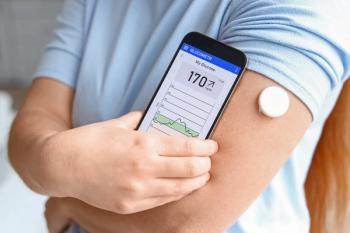
Consumerization of Diagnostic Tools Can Close the Gap Between Delivery, Pharmacy Solution
Entrepreneurs and healthcare retailers can support pharmacists by digitizing the recommendation model and closing the diagnostic gap.
Pano Anthos is the managing partner of
PT Staff: What factors are driving innovation in the consumerization of healthcare?
Pano Anthos: Well, the starting point is the consumer, him and herself. And what they're doing is they're spending more of their dollars their wallet, on their wellness and health, both in terms of increased insurance costs and general health care costs, and also a desire at the consumer level to actually get better care for themselves, call it self-care. And it could come in the form of doctor-assisted, or it could actually come (in most cases even more than that) over the counter. So there's a real effort and time to focus on mental wellness and physical wellness that are really more prescriptive in nature, that the consumer is taking charge of and owning. And so that then causes entrepreneurs to respond to that. They themselves are consumers, and they are also thinking about what they should be ingesting, washing with putting on their hair. So there's a dimension of self-evaluation going on, that then causes them to think about what's needed for the feminine (femme) care market, what's needed if they're feminine. You know, generally speaking, most men will not be thinking about femme care and that's fine because there are plenty of women who have lots of innovations out there and who will be thinking of that market. And so you find that entrepreneur founders often solve a need that they feel like they have when they go out and build something, and service something. So that's the starting point. The second thing is that time is the big factor people are trying to capture back. We only, all of us, get 24 hours. And for anyone who’s had to wait in a doctor's office, pity the poor doctor because they're also suffering, [and] it is a nightmare of time. It's an incredible time-waster. It's very inefficient. And anything you can do to capture your time back, people are willing to pay for it, and entrepreneurs know that. So those are the 2 things.
PT Staff: How can entrepreneurs in the healthcare space keep up with patient expectations for access to health information and at-home diagnostic tools?
Pano Anthos: Well, there's a couple of ways. One is they could be experts in the industry or field that they're trying to innovate, in which case then they can bring their expertise to a new distribution model. So, for example, we have a company in the anemia space called Sanguina. They're experts in anemia. The issue there is that anemia typically used a bunch of blood prick [as diagnostics]. And it was usually done in a doctor's office, and you'd be evaluated with a blood test. Now that's moving to a blood prick at home, but they're taking a step farther and doing it off of an iPhone app. And as a consequence of that, the consumers are getting this incredible anemia check, if you will, a blood check, and [the company is] getting it to them— immediately to the consumer. And so what you're seeing is that the gap between the delivery and the solution is being solved by the entrepreneur, who are they themselves consumers, and that's how, for example, Sanguina started.
PT Staff: How can pharmacists, health care providers (HCPs), consumers, and entrepreneurs improve standardized methods of communication?
Pano Anthos: Pharmacists in many respects are serving as pseudo doctors today, more and more. As we know, the pharmacist is being asked point blank what the care should be for X, Y, and Z And what should I do for X. And so they are counselors and caregivers in many cases, which was not probably their original job description, and they themselves are limited both in time and availability. And I think it's up to the retailer who's supporting that pharmacy system to create more onboarding platforms before you get to the pharmacy.
So the idea is that you should be able to run your home diagnostic tests under the guidance of both doctor care or pharmacy care to understand what it is that's going on in your section in your situation.
But the pharmacist is not the doctor, so don't take what I'm saying as being that they are giving the care, but they're often being asked for a recommendation. And so that recommendation model needs to be digitized, if you will, and made available through other means besides asking the pharmacist.
Second thing is the entrepreneur looks at the other side of the coin and says, “Okay, how do we deliver value and solutions in where this gap exists.” And this gap is real and that consumer is struggling. You go into any number of the drugstores and you're overwhelmed with the sheer volume of product, and no clear information path to understand what the difference is and what you should be taking and not taking.
So for example, if you're looking at taking melatonin, which is over the counter, it's going to help you sleep. Great. But there are there's melatonin at various levels of dosage, then there is melatonin with all kinds of other ingredients in there. And there must be 500 different models of melatonin in any given drugstore today. So what does a consumer do? They go up to the pharmacist and they say, “What should I do here. I'm completely confused.” It's an overwhelming amount of information.
So what the entrepreneur is trying to do is capture that data point of the consumer earlier. Now that can come through a sleep app. So Apple's developing a sleep app, and over time that sleep app will actually monitor your sleep behavior and tell you you're getting X number of hours of REM (rapid eye movement). you're getting wide numbers of core; you're getting X hours of deep sleep. And that sleep pattern may give information back to the consumer as to what level of melatonin dose they might consider because they're not getting any sleep or they're getting too much sleep. So there's just a feedback loop that's missing right now where the consumer just hears something and says, “I need melatonin. I'm not sleeping properly.” And probably through a friend goes in and just randomly chooses a dosage, whether it's the right dosage or not, then goes online and reads more about the fact that melatonin, like you shouldn't take so much more than X amount, or you shouldn't take it more than 30 days—all of this without any doctor care. There needs to be a gap between that the doctor and the pharmacist, because at the end of the day the products are being sold through the drugstores to perfectly valid drugs or non-drugs. But there's this enormous diagnostic gap that's missing to get the right dosage for the right person at the right time.
PT Staff: How can entrepreneurs in the space (or even pharmacists/HCPs) conduct successful consumer research that could improve healthcare delivery solutions?
Pano Anthos: So it the solution actually is very old and antiquated, which is you talk to people. When you talk to enough people and you ask enough questions, you develop a theory. We call it the rule of 5. If you ask 5 people the same question and they all answer with the same answer, you're onto something. It's not statistically significant. But it gives you a pretty good idea that you're onto something. And then that rule of 5 should turn into a rule of 150 where you take 150 questions or people, and you ask them a set of questions. And you see if in fact that then goes into an area of statistical significance. Then you know you've got something.
So it's unfortunately feet on the street. It's not highly sophisticated. And it's really in many cases, very simple, you know, behavioral watching what people do. I mean, you don't have to be a rocket scientist to walk into these drugstores and see 500 different bottles of melatonin. No. How is anyone going to figure this out? Right? You don't have to be a rocket scientist to see that.
Walking around talking to people, you'd say, “Hey, I'm a student.” A lot of times we tell entrepreneurs to act like a student say, “I'm doing a research project for my thesis on melatonin. I see you're looking at melatonin right now. Can I ask you a few questions? I promise you, I'm not asking for your name, or whatever.” And you ask questions like, you know, “What [or] Why are you looking for melatonin?”
[They say] “I'm having trouble sleeping.” Okay, great. “Has anyone given you any guidance on how much melatonin you should use now?” [They say], “Yes.”
So you build a list of questions because you're trying to see if, in fact, this customer ultimately, by rent, would use some sort of information model or content or product that would guide them on how much melatonin to use on our daily basis.
For example (I'm just making that up) the idea is that you must do a lot of questions and ask a lot of people. If the [question] is ultimately, “How much would you be willing to pay for this?” And if the answer is “I wouldn't because I need it once and once I find the right dosage I never care about it again” (which happens) then you go off and you say, “Okay, well, there's no market for this. People want it, but they want to pay for it once. They don't want to keep paying for it.”
Right? But let's say you step back, and you say, “Well, okay, all this melatonin is out there. But maybe I should come up with a version of melatonin that has a different makeup or mix or it's natural to organic.” And that's all been done since then. But you see, the idea is that there's going to be iterations on the questions, and you learn other things. And it's just a lot of question and answer. I hate to say it.
PT Staff: Why do you think people over complexify this research?
Pano Athos: Because they project their own ideas on the consumer. [They say] “Oh, they need this. Now they don't need this.” They think you think they need this, but they don't need this. And then they'll tell you flat out, they'll say, “Are you willing to pay for this?” And the consumer will say yes or no. And then the next question is the most important question. “How much are you willing to pay for this on a monthly basis?” And the person says $2.00, and that tells you a lot. [Or] They'll say, “I'll pay anything. I'll pay anything for this.” Then you know you've got something where price is not the issue. Right? So, it's about how you ask the question and asking enough people to get the answers. And the pharmacist is in a great situation. They get these questions all day long about their care. No one interviews the pharmacist and says, “What should we build?”
Newsletter
Stay informed on drug updates, treatment guidelines, and pharmacy practice trends—subscribe to Pharmacy Times for weekly clinical insights.
















































































































































































































